A Beginner’s Guide to the NC500 in Scotland
If you’re currently thinking about completing the North Coast 500 (NC500) in Scotland, then you’ve come to the right place. In this guide you’ll find answers to most of the questions we had before we embarked on one of the best road-trips in the United Kingdom.
We’ll discuss what the NC500 actually is, where it starts and ends, what the best direction to do it in is, how many days you need, what type of vehicle to use, which type of accommodation you should book and what to expect when it comes to cost. We’ll also link our dedicated guides to some of the best attractions along the route, as well as tips for driving the NC500 safely.
Disclosure: This post may contain affiliate links, which means we may receive a small commission if you click a link and purchase something. Clicking these links won’t cost you anything, but it will help us to keep this site up and running! Learn more about our affiliate policy.
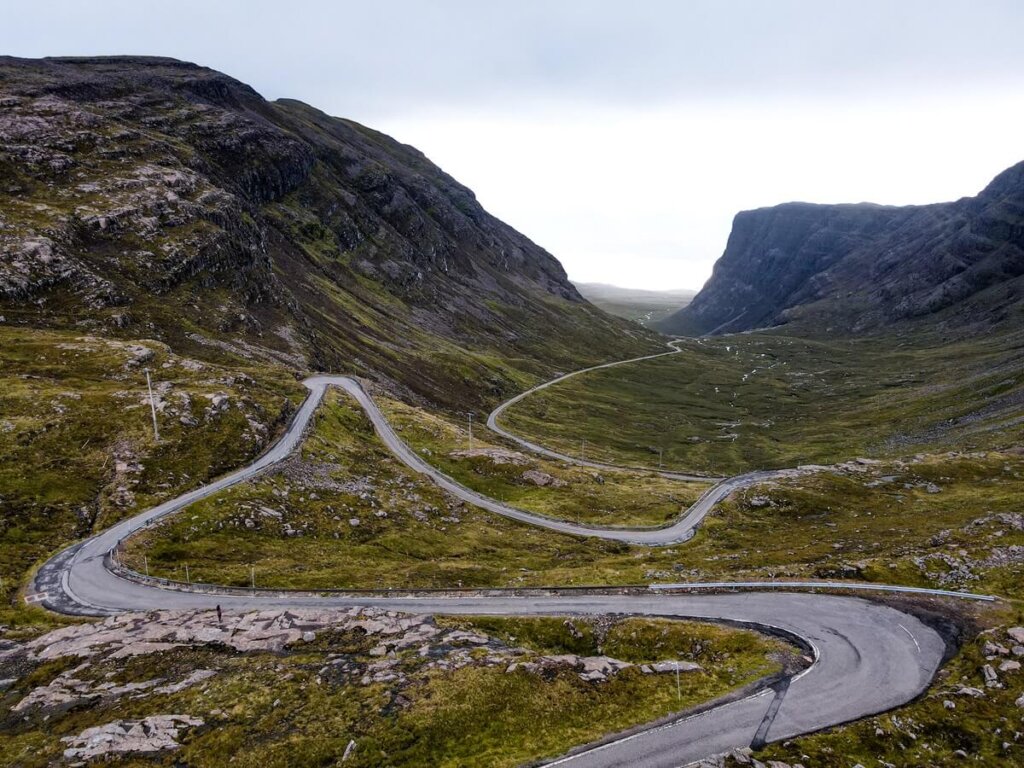
What is the North Coast 500?
The North Coast 500, more commonly referred to as the NC500, is a 516-mile-long route around Scotland’s rugged north, passing incredible coastal views, mountainous landscapes, white-sand beaches that could easily be confused with the Caribbean (apart from the temperatures), rich wildlife and picturesque villages.
It’s basically Scotland’s version of the Pacific Coast Highway in the US and, even though the NC500 is way shorter, it’s packed with some of the best attractions in the Scottish Highlands.
Although the road connecting these places isn’t new, the official NC500 route only launched in 2014. Since then, it has increased in popularity, so much so that locals have very mixed feelings about the number of tourists driving this route, especially during the summer.
Six regions of the Scottish Highlands are included in the route: Inverness-shire, Wester Ross, Easter Ross, Sutherland, Caithness, and the Black Isle.

Where Does the NC500 Start and Finish?
The scenic NC500 starts and finishes in Inverness, aka the capital of the Scottish Highlands. You can reach Inverness from anywhere in the UK via your chosen vehicle. If you’re coming from abroad, then you can fly to London first and get a connecting flight to Inverness. Alternatively, you can also fly to either Edinburgh or Glasgow and start your journey from there.
Find Flights to Inverness✈️
Top Tip. When you’re planning your trip, we suggest stopping in the city for at least one night as there are quite a few things to do in Inverness.
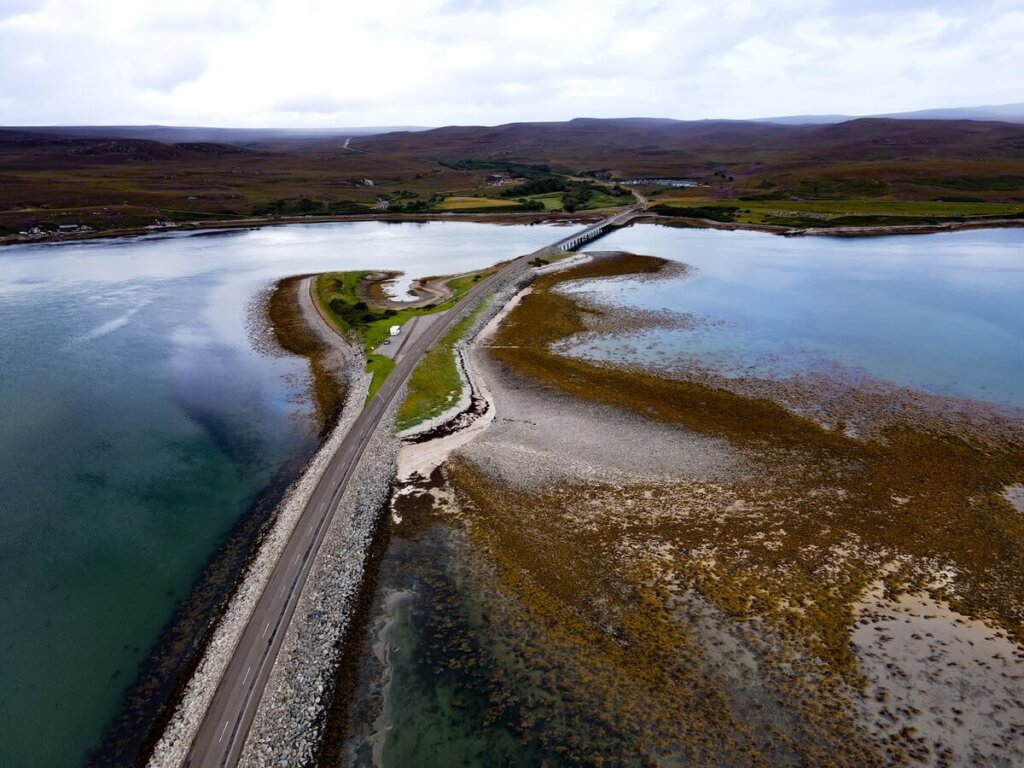
NC500 Driving Route: Which Direction is Best?
From Inverness you can either drive north-east towards Wick and John o’ Groats or, alternatively, you can also drive west towards Shieldaig and then north towards Ullapool. There’s really no right or wrong way to drive the NC500. The western section of the NC500 is 100% the most scenic. So you can either drive through the more interesting sections first or leave them for last. We opted to drive in a clockwise direction and had an absolute blast. Below we’ve given you a quick run-down of our clockwise driving route.
1. Inverness to Ullapool Section (Inverness-Shire and Wester Ross)
We started our NC500 trip by driving west from Inverness towards Ullapool. We initially followed the A835, then turned onto the A832 just before Gorstan. From there, we drove along the A832 all the way to Achnasheen.
Here we turned onto the A890, then the A896 towards Lochcarron and Tornapress. Just before Tornapress we turned onto the tiny Applecross Pass, which took us up the iconic Bealach na Bà stretch of road.
From there, the official route follows the small road all the way to Shieldaig. We then followed the A896 towards Kinlochewe, before turning onto the A832 heading northwest along Loch Maree. This road took us to Gairloch, Poolewe, Drumchork, and other towns until we merged with the A835 towards Ullapool.
2. Ullapool to Thurso (Sutherland)
From Ullapool, we drove further north through the Sutherland section of the NC500. We followed the A835 but took a little detour and drove west at Drumrunie to climb Stac Pollaidh, a wee mountain with stunning views of the Scottish Highlands.
After a quick drive back to Drumrunie, we continued driving along the A835 and A837 towards Lochinver. From there, we joined onto the B869 and drove past some incredible beaches and small villages.
This road eventually joined up with the A894 heading towards Kylesku and Scourie. Later, we turned onto the A838 toward Durness and Tongue. From Tongue, we drove along the A836 to Bettyhill, Melvich and Thurso.
3. Thurso to Inverness (Catihness and Easter Ross)
From Thurso, we weren’t too far from the well-known John O’ Groats sign and Dunnet Head, the most northerly point in mainland Britain. At John O’ Groats, the A836 turns into the A99 which we followed towards Wick and Latheron. From there, we turned onto the A9 and headed all the way back to Inverness.
Read Next: Essential Tips for Driving the NC500
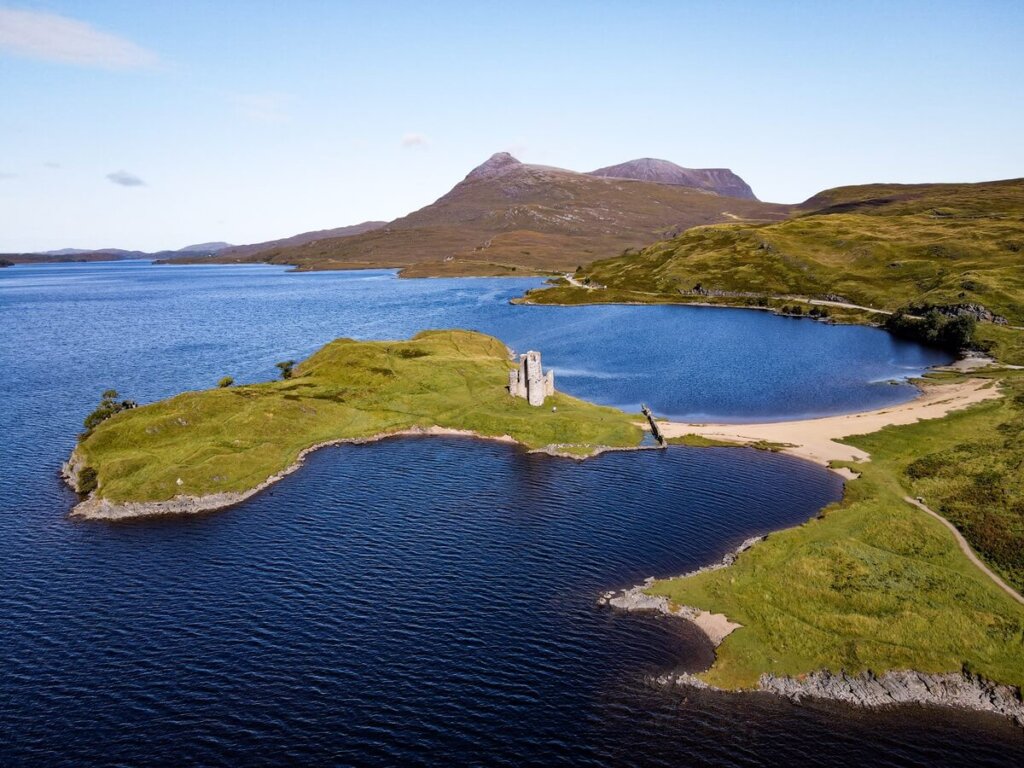
Can You Shorten the NC500?
If you don’t have long, you can implement some shortcuts here and there. However, if you drive a campervan-style vehicle, you’d need to stay on the bigger roads. Below are some of the ways you can shorten your NC500 route:
- From Inverness, you can drive straight to Ullapool by following the A835. The official route would take you on the A832 after Garve, which leads to the Wester Ross area.
- If you don’t want to miss too much of Wester Ross, then you can just shorten this section by turning onto the A832 after Garve but continuing along this road at Achnasheen. This way you only cut off a little corner of the route instead of the whole Wester Ross section.
- At Loch Assynt, you can join the A894 and drive straight to Kylesku.
- From Thurso, you could drive down to Latheron along the A9. However, you would miss out on visiting the northernmost point in mainland Britain, so we personally don’t recommend this shortcut.
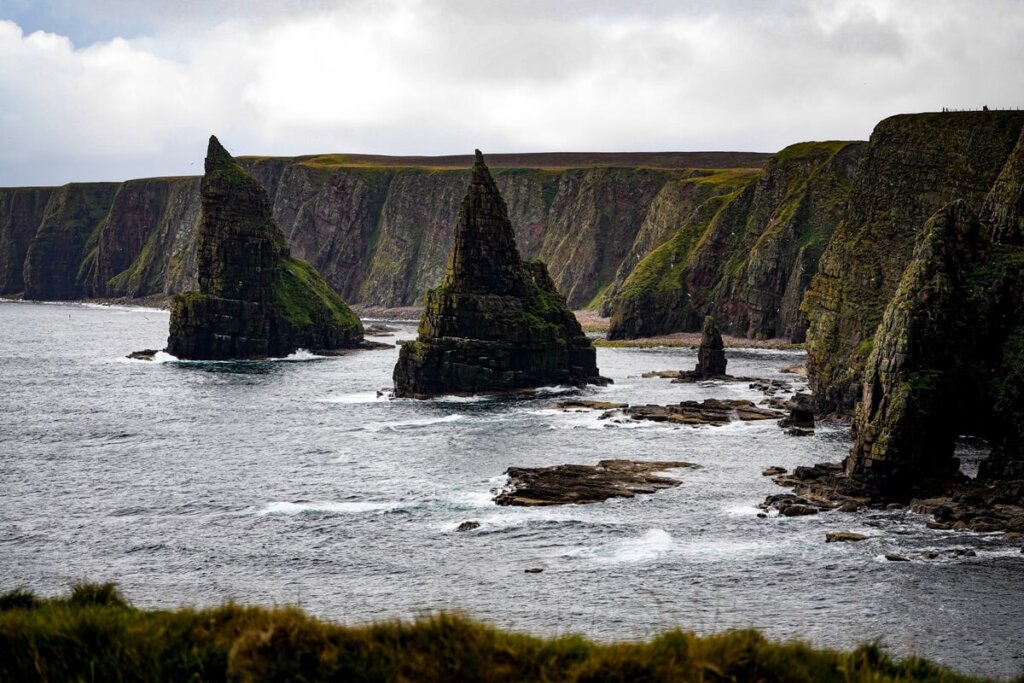
Can You Make the NC500 Longer?
While you can’t make the official NC500 route any longer, there are other roads you can drive on if you have some extra time.
- At Drumrunie, you can follow the small road to the left and hike up Stac Pollaidh. From there, instead of driving back, you could carry on along that small country road to Lochinver.
- You can also drive down the A838 between Laxford Bridge and Dalchork. We did this, as we had a few extra days to spare, and it was probably one of the most beautiful drives we’ve ever done in the Highlands. Up there with Glencoe and the Isle of Skye.
- From Dalchork, you can then drive up the A836 to Tongue. Both the A838 and the A836 are beautiful alternatives to the official route, and they are way less travelled, which was a nice change from all the traffic along the official NC500.
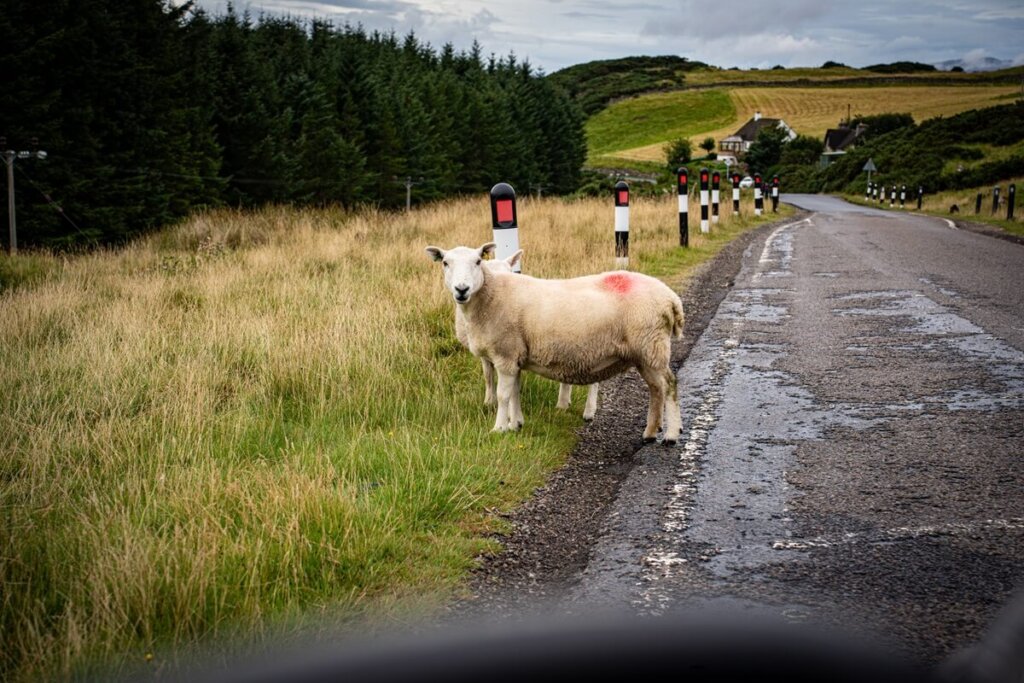
How Long Does the NC500 Take to Drive?
A minimum of 5 days is needed to drive the NC500. However, we don’t think that you would get the most out of the experience in just 5 days. There’s too much to see and do, which is why we recommend planning for at least 7 days to have a more enjoyable experience. Whilst the drive itself is amazing, we believe that taking things a bit slower and stopping at more locations along the way will make your road trip even better.
We completed the drive in 7 days, which was just about enough but we definitely could’ve taken it even slower. However, we couldn’t take any more days off from our jobs. Plus, we had to calculate in the driving time to and from Inverness. This meant that we stopped in Stirling for a night on the way up, spent 2 nights in Inverness and then had a night in Glasgow on the way home. So, in total our trip lasted 11 days.
When you’re planning the number of days you’ll need for your drive, bear in mind that there are a ton of things to do along the NC500 depending on your interests. There are plenty of beaches, small towns, historic places and hikes to add to your itinerary. In hindsight, we wish that we could’ve afforded to add a few extra days for an even more relaxed road-trip. So, if you can spare the time, definitely consider setting aside about 10 days for your drive.
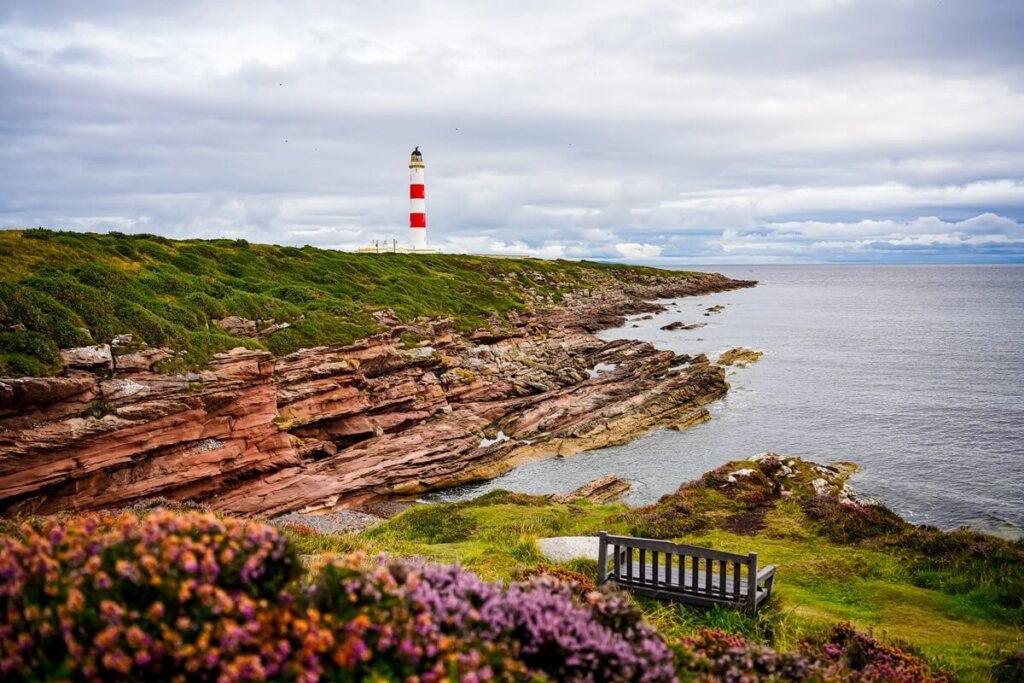
Best Time to Drive the NC500 in Scotland?
In theory, you can drive the NC500 all year round. As you can imagine, there are pros and cons of doing it at certain times of the year.
Summer Season
One of the pros of driving the NC500 in the summer is that there is a higher chance of getting decent conditions (although Scottish weather is still incredibly unpredictable)! When the sun is shining, the colour of the beaches really does look like those in the Caribbean, even if it won’t be as warm. Sunny weather is also ideal for walks, hikes and other outdoor activities. Another pro is the longer daylight hours, which allows you to fit more into your itinerary each day. More facilities, campsites, pubs and restaurants will be open during this time too.
However, June, July, and August are without doubt the busiest months to drive the NC500. This means that booking your accommodation in advance is important. Prices are going to be inflated and it’s also peak midge season, which can make outdoor activities a bit of a nightmare.
Spring / Autumn Season
Nowadays, travelling in the shoulder season doesn’t mean that there won’t be anyone else on the roads. However, there will be slightly less traffic for sure. In spring and autumn, you still get the longer days and, if you go at the right time, the landscape can look incredibly colourful too. Thankfully, there won’t be as many midges either. However, the weather can be pretty unpredictable and, if you go too early or too late, there may not be as many places open during these seasons.
Winter Season
Whilst you can technically do the NC500 in winter, we generally don’t recommend setting off on such a long drive during this season. First of all, the weather is pretty much guaranteed to be awful. If you get a sunny, crisp winter day though, the views would be incredible. Secondly, daylight hours are much shorter and driving in the dark is pointless as you’ll miss all the spectacular views. There won’t be as many accommodation options either, and a lot of facilities and restaurants will likely be closed for the season. Plus, it’s such a remote area that you could easily get stranded due to bad weather conditions.
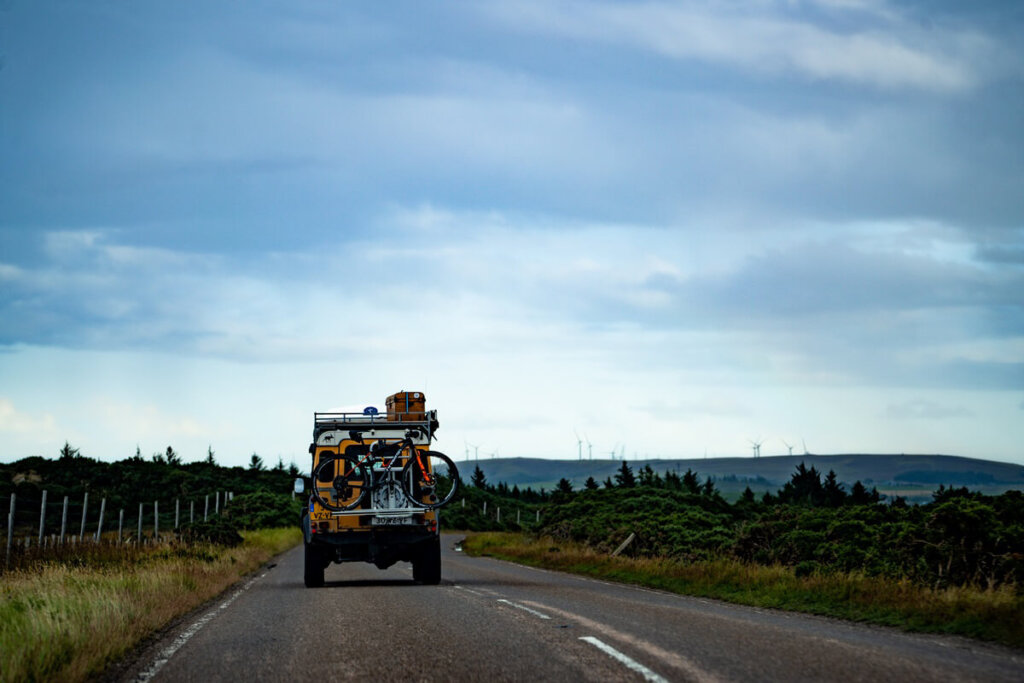
What Vehicle Should You Complete the NC500 in?
We saw all sorts of vehicles driving along the NC500 from average cars to electric cars, sports cars, vintage cars, campervans, motorbikes, and even bicycles.
So, which one is the best type of vehicle for driving along the NC500? Well, it depends on what vehicle you might already have, your interests, budget and the type of accommodations you’d want to stay at on this road-trip.
Motorhomes and campervans are great because you can sleep in them, so you don’t need to worry about booking a night’s stay somewhere in advance. If they also have a kitchen and toilet then you’ll have even more freedom. Now, the downside of such huge vehicles is that you won’t be allowed to drive them on some of the very narrow sections of the route. Unfortunately, the warning signs didn’t seem to deter a lot of drivers, and we saw campervans driving and parking overnight where they technically shouldn’t have. Make sure to read more about driving a campervan / motorhome here.
Cycling might sound fun, but you need to be quite fit to do it. It would also take you way longer to complete the route, although it could be an amazing challenge.
We personally drove around in our own vehicle, which is an average sized car, but you can always rent a car before your trip too. With that, we were able to drive along the smaller roads and didn’t miss out on some cool sections because of vehicle restrictions. Just make sure that your vehicle is capable of handling some of the steeper inclines and long distances.
There are quite a few EV charging points along the route too, so you can easily drive the NC500 in an electric car. Just like with petrol stations, make sure to check charging points ahead of time.
Driving a car means that you’ll need to think about your accommodation ahead of time. You can camp if you have all the gear but you can also book B&Bs, self-catering cottages, cabins, or even a castle stay.
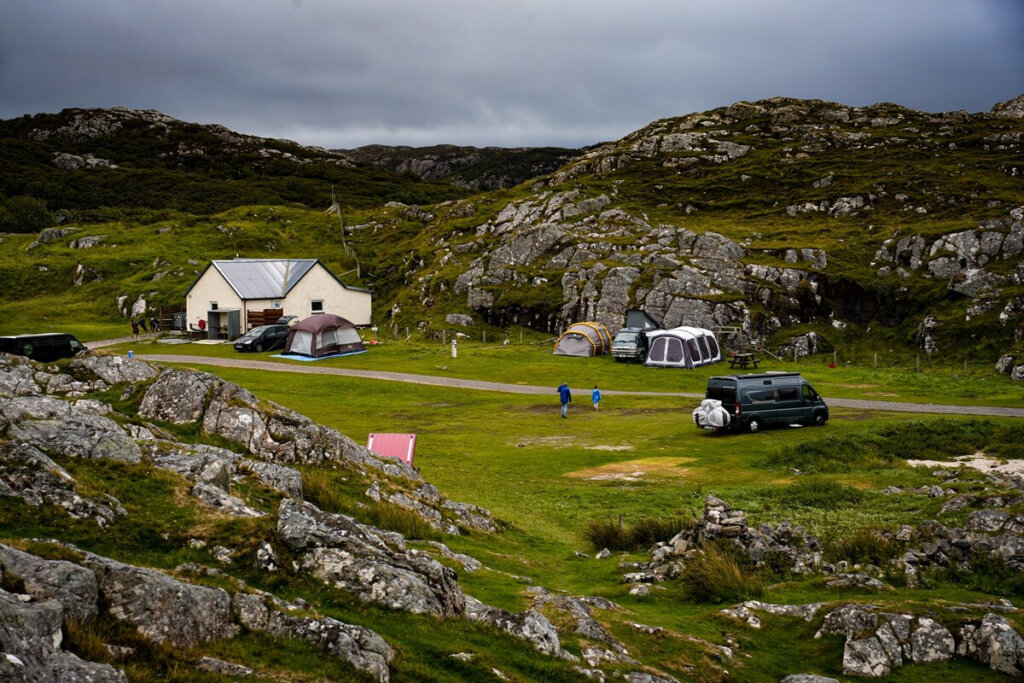
Accommodation Types Along the NC500
Another aspect you’ll want to consider when planning your NC500 trip is accommodation. It’s worth noting that during the summer season accommodations can get booked up way in advance, so we recommend thinking about options well before your trip.
If you’re renting (or own) a campervan or motorhome, then you’re most likely going to be sleeping in that. However, you’d still need to see where you can legally park overnight along the route, and book a campsite in advance if needed.
If you want to stay in a small hotel, B&B, or self-catering cottage, you really need to book this in advance. This will also determine how far you need to drive each day. Places may require a minimum of a 2-night stay. Therefore, we recommend checking out the main hubs such as Shieldaig, Ullapool, Tongue, Thurso, and Wick. We found these places ideal to stay for more than one night, as there is plenty to do nearby each of them.
Lastly, you can always camp, which is probably the most cost-effective way to do the NC500. You’ll be pleased to know that RESPONSIBLE wild camping is legal in Scotland. This gives you a lot of freedom to wake up right next to some epic locations. Although it sounds romantic, there are a few things you should know before you pick this option. One of them is that you should camp further away from the roads, which might be hard on a ‘road’ trip along the NC500.
We recommend reading the Scottish Outdoor Access Code to familiarise yourself with what you can and cannot do.
Unfortunately, there are many irresponsible campers out there, so please don’t add to the problem. Always leave your spot better than you found it. You can book campsites too, which have basic facilities such as toilets and showers.
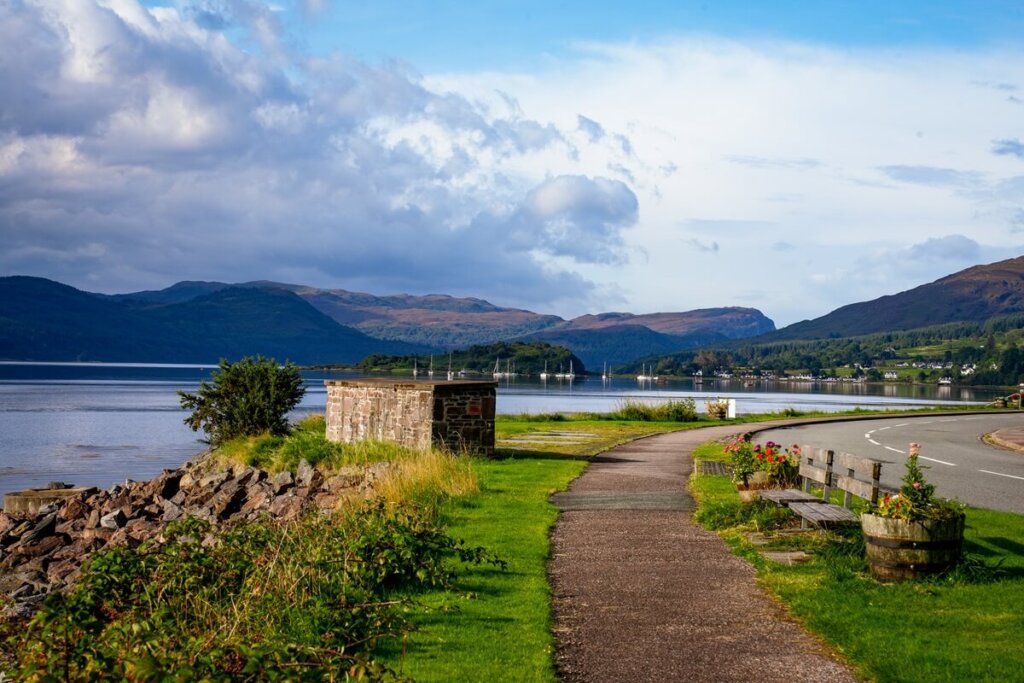
How Much Does Driving the NC500 Cost?
Whilst you don’t need to pay to drive along the NC500, there are a few cost factors you need to be aware of.
Method of transport. Are you driving your own vehicle or planning on renting one? If you’re thinking about renting one, calculate whether hiring a campervan will be more cost-effective than a normal car. Another vehicle related cost to bear in mind is fuel prices or EV charging.
Accommodation type. B&Bs, hotels, and self-catering cottages will generally be more expensive for a night than a camp site. If you have a campervan, then your accommodation cost will generally be lower, although you may want to pay for a camping spot here or there. You can also wild-camp, which will be the most cost-effective option.
Food. Your next big expense while driving the NC500 will be food related. Eating out is going to cost you a lot more than cooking for yourself or taking packed lunches with you. Bigger towns have supermarkets where you can pick up some essentials to keep your costs down. We lived pretty much exclusively off Tesco meal deals and ready meals during this trip!
Activities. Whilst most attractions along the NC500 are free, there are a few places where you’ll be required to pay an entrance fee. There might also be some parking charges here and there.
Length of trip. Of course, the more days you spend driving, the more it’s going to cost you.
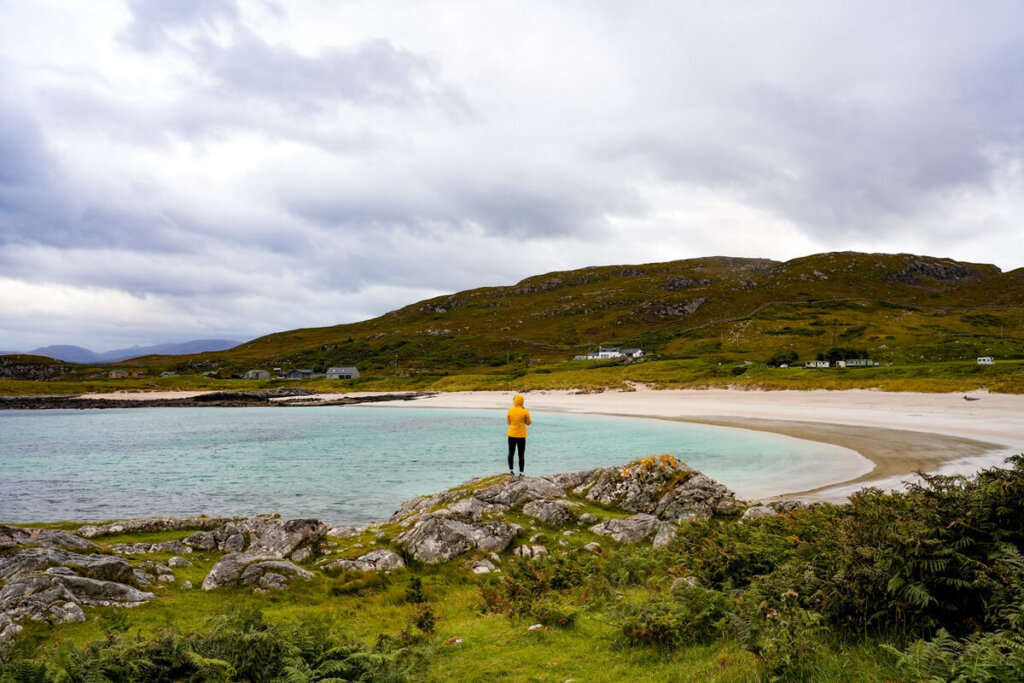
Additional NC500 Resources
Below we’ve linked some of our other useful guides, from the best beaches to must see natural and man-made attractions, as well as our top driving tips and some official websites you should use when planning your own NC500 route.
Read Next:
Tips for Driving the NC500 in Scotland
Stunning Beaches to Visit along the NC500 in Scotland
Natural Attractions to Visit Along the NC500 in Scotland
Man-Made Landmarks to Visit Along the NC500 in Scotland
How to Spend 2 Days in Inverness, Scotland

Final Thoughts on a Beginner’s Guide to the NC500 in Scotland
We hope that this short guide has given you some of the answers you were looking for before starting your drive around the NC500. We spent more than a few days planning out our NC500 itinerary, so we knew where we would ideally like to stop along each section. This helped us get an idea for how long each day of the drive would be, where we should stay along the route and for how long. Since we had our own vehicle we didn’t have any rental costs, which meant we could spend a little extra on accommodation. We drove the route in August, which is considered the peak season, therefore prices were slightly higher and availability was lower. However, by planning far enough in advance, this didn’t turn out to be a problem for us.

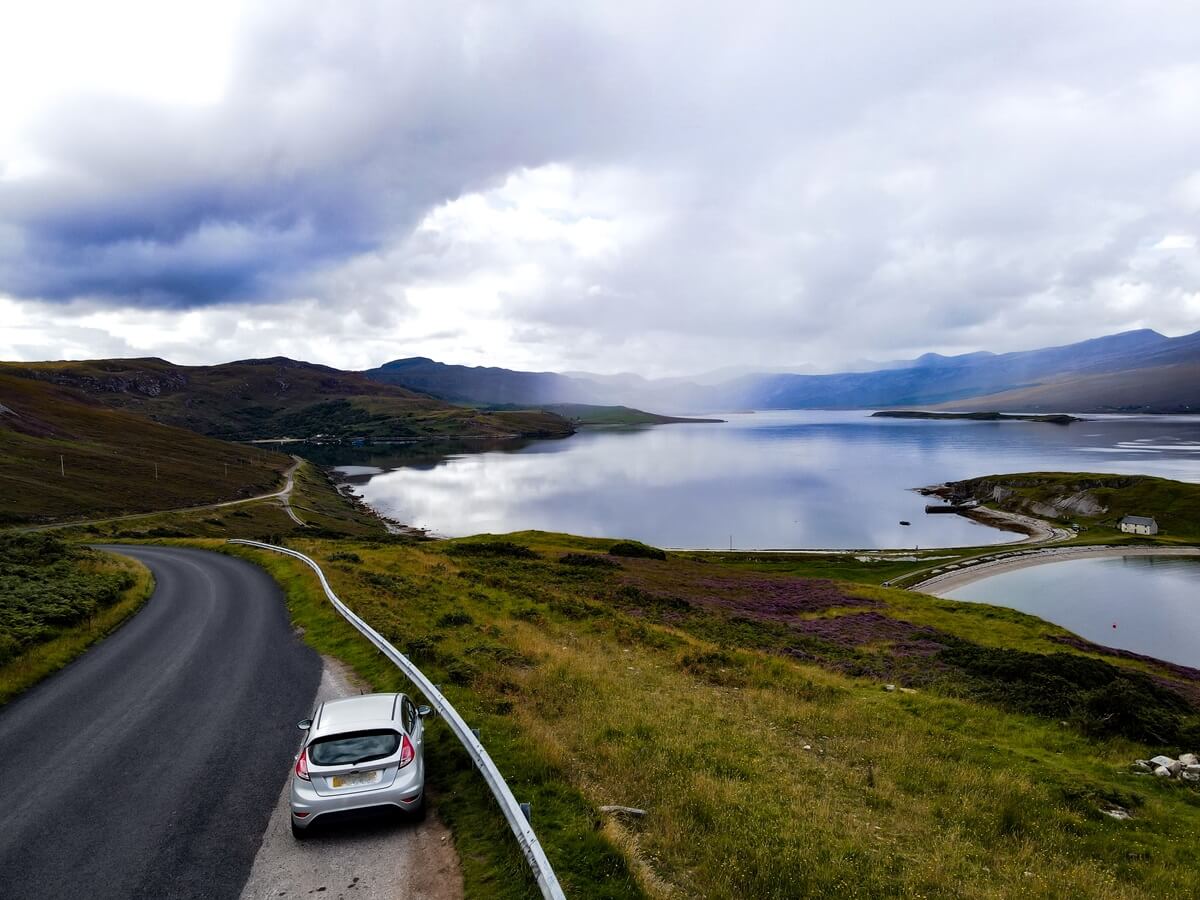

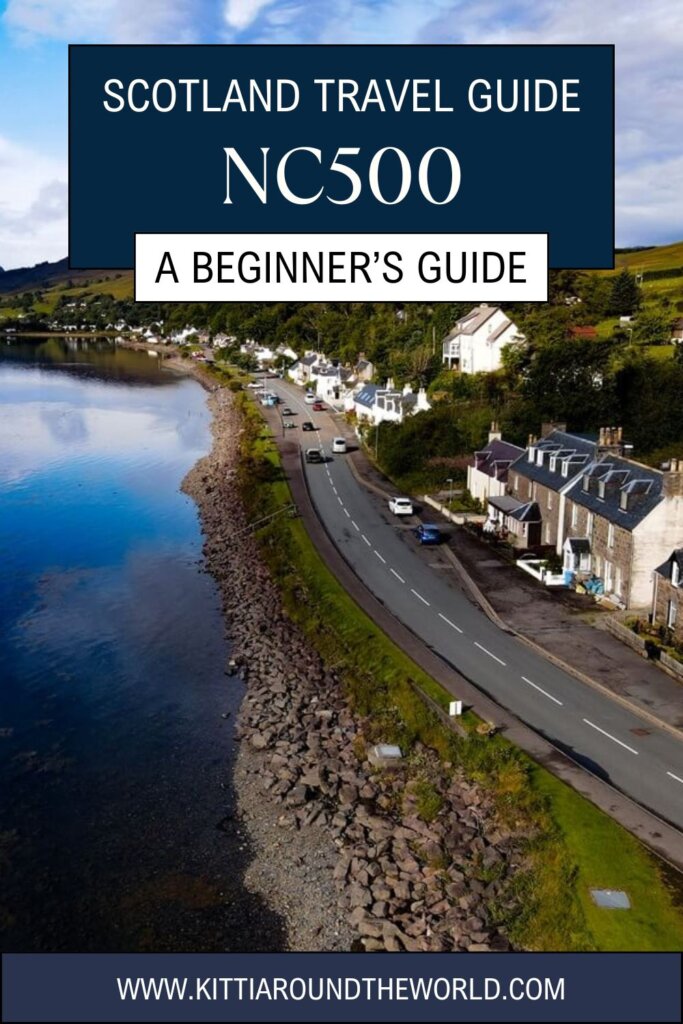
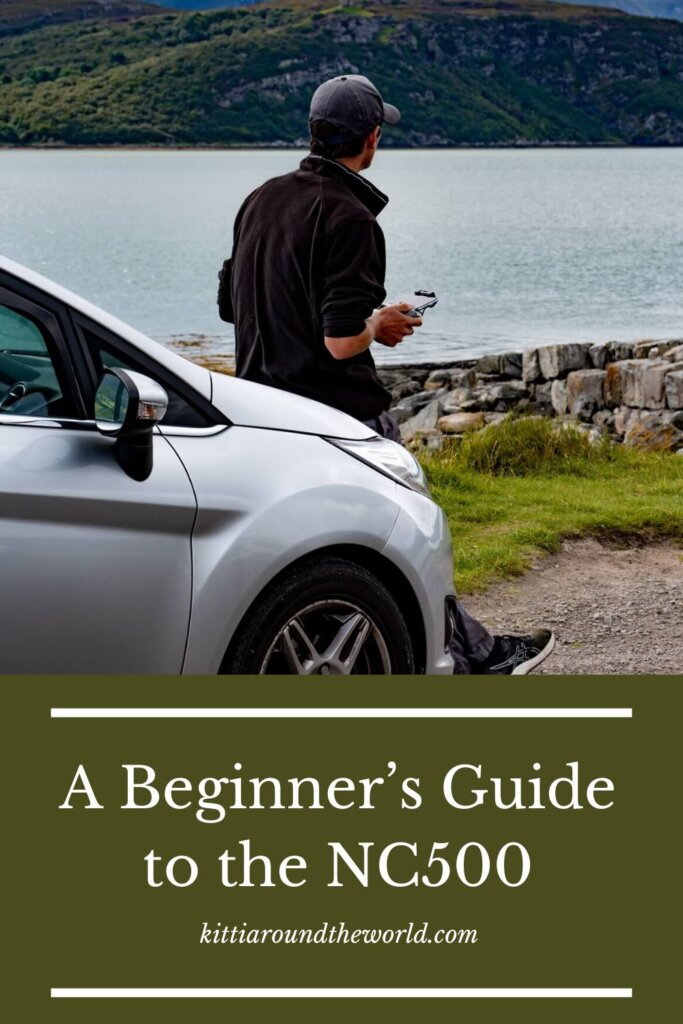

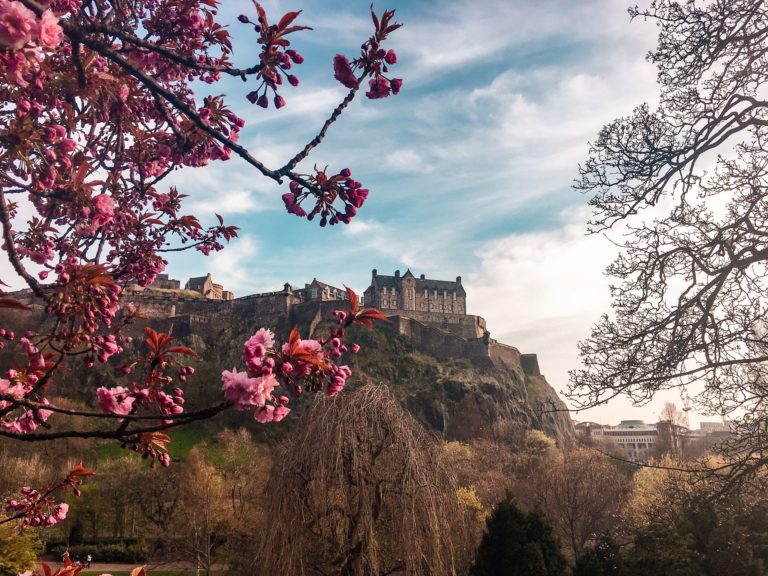
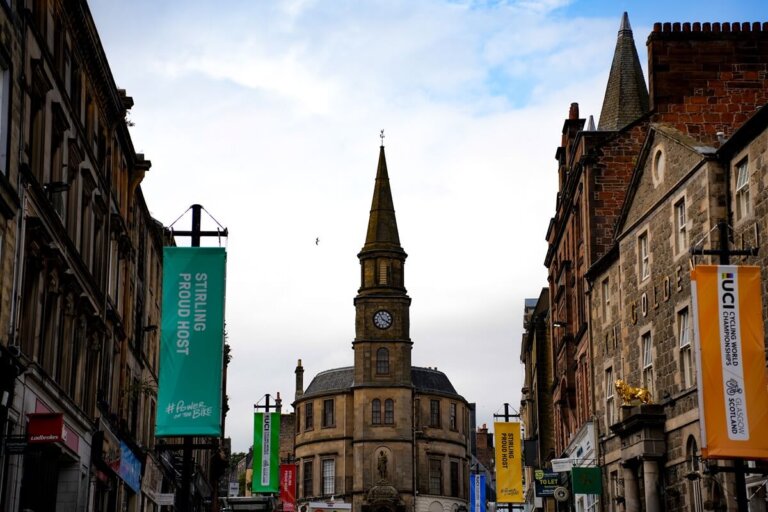

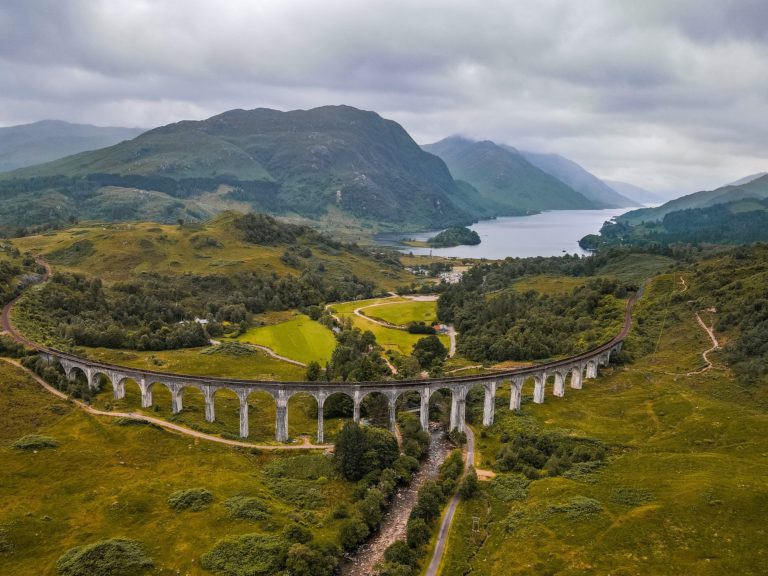
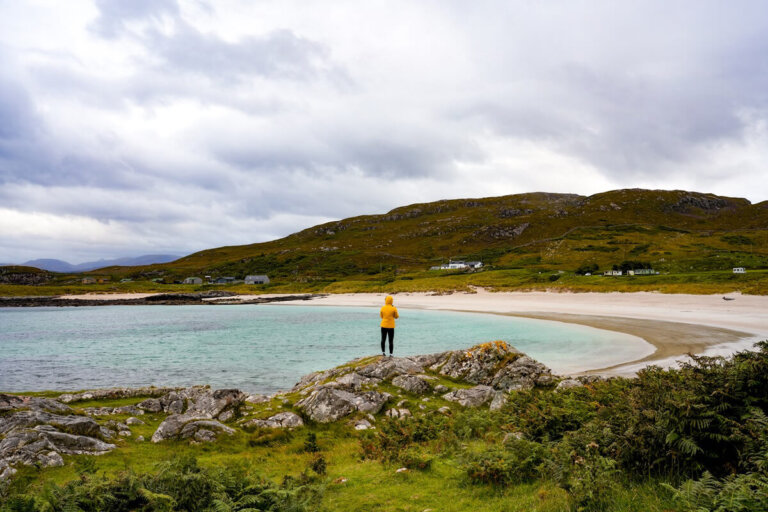
Lots of good useful information and advice.
Thank you Karan! 🙂